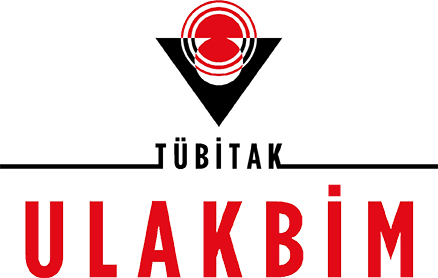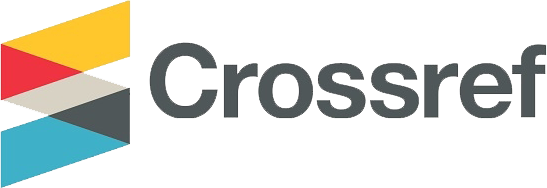Nisan 2014
- Ana Sayfa
- Sayılar
- Nisan 2014
- Dieulofaloy lezyonunun kombine tedavisi: Olgu sunumu
Nisan 2014 / (22 - 1)
Dieulofaloy lezyonunun kombine tedavisi: Olgu sunumu
Sayfa Numaraları
18-20
Yazarlar
Şehmus ÖLMEZ
1
, Bünyamin SARITAŞ
2, Mehmet ASLAN
3
, Ahmet Cumhur DÜLGER
1, İbrahim AYDIN
3
Kurumlar
Departments of 1
Gastroenterology, and 3
Internal Medicine, Yüzüncü Yıl University Medical Faculty, Van
2
Department of Gastroenterology, Muş Public Hospital, Muş
Özet
Dieulafoy lezyonu nadir görülen ancak önemli bir üst gastrointestinal kanama nedenidir. Sıklıkla midede görülmekle birlikte ince ve kalın bağırsaklarda da görülebilir. Tipik olarak gastroözofageal bileşkeden sonraki 6 cm
içinde, küçük kurvatur yönünde yerleşir. Bu lezyonlara bağlı kanamada, hemostazı sağlamak için değişik endoskopik yöntemler kullanılır ve kanayan
Dieulafoy lezyonu tedavisi için en uygun endoskopik tedavi yöntemi henüz
iyi tanımlanmamıştır. Argon plazma koagülasyonu üst gastrointestinal kanamada başarılı bir şekilde kullanılmasına rağmen Dieulafoy lezyonuna bağlı
kanamalarda kullanımı sınırlıdır. Burada enjeksiyon tedavisi ve argon plazma koagülasyonu ile kombine olarak tedavi edilen, kanayan gastrik Dieulafoy lezyonu olan olguyu sunacağız.
Anahtar Kelimeler
Dieulafoy lezyonu, gastrointestinal kanama, argon plazma koagülasyonu, tedavi
Giriş
Dieulafoy’s lesion (DL) is a caliber−persistent submucosal artery associated with a minute mucosal defect (1). DL is a rare
cause of gastrointestinal bleeding, which can be life- threatening or recurrent if left untreated, and it has an incidence of
0.3–6.7% (2). Endoscopic treatment has replaced surgery as
Şehmus ÖLMEZ
1
, Bünyamin SARITAŞ
2, Mehmet ASLAN
3
, Ahmet Cumhur DÜLGER
1, İbrahim AYDIN
3
the standard diagnostic and therapeutic method for bleeding DLs (3). Endoscopic interventions, such as band ligation,
thermocoagulation with heater probe, bipolar electrocoagulation, photocoagulation, injection therapy, and endoscopic
hemoclip application, are among the first choices in the therapy (1,2). The control of bleeding due to DLs can usually be
provided with endoscopic therapy, but the best modality of
endoscopic intervention is not yet certain (1,2). Epinephrine
monotherapy has a higher rate of rebleeding (4). Argon plasma coagulation (APC) is compact, mobile and easy-to–use,
and has a relatively low cost when compared with the other
treatment modalities (5). APC has been used successfully in
the upper gastrointestinal tract. However, experience using
APC to treat DLs is quite limited (3,6). We report a case of a
58-year-old female who admitted to the emergency department with hematemesis and melena. During endoscopy, a
non-bleeding vessel was seen on the lesser curvature of the
stomach near the gastroesophageal junction, and a diagnosis
of DL was made. The lesion was managed with APC and injection sclerotherapy.
Olgu
Dieulafoy’s lesion (DL) is an important cause of upper gastrointestinal bleeding, and this lesion may be seen anywhere
Combined treatment of Dieulafoy’s lesion: Case report
throughout the gastrointestinal tract, but it usually develops
in the proximal stomach, predominantly on the lesser curvature (1,9). DLs are usually found within 6 cm of the gastroesophageal junction; the arterial flow in this area emerges
directly from the left gastric artery (4). DLs are usually associated with comorbidity such as cardiovascular disease, arterial
hypertension or renal failure (4,7).)
The most frequent clinical manifestation of DLs is a massive
upper digestive hemorrhage. It is probably a recurrent bleeding without pain, and is associated with a severe life-threatening hemodynamic condition, affecting previously healthy
individuals without gastrointestinal diseases or peptic symptoms (3,4).
Advances in endoscopy have increased the detection rate of
DLs and significantly decreased the mortality (3,7). The endoscopic criteria proposed to define DLs are: active arterial
spurting or micropulsatile streaming from a minute (<3 mm)
mucosal defect or through normal surrounding mucosa; visualization of a protruding vessel with or without active bleeding within a minute mucosal defect or through surrounding
normal mucosa; and fresh, densely adherent clot with a narrow point of attachment to a minute mucosal defect or to
normal appearing mucosa (7). The first step to diagnosis DLs
is endoscopy, but due to the small size of the lesion, its relatively inaccessible localization and the presence of blood and
blood clots, the diagnosis is difficult (3,7). Success rates for
the first endoscopy range from 77-92,4% (1,8). Therefore,
repeated endoscopy may be necessary (3,7). Endosonography and angiography can also be used for the diagnosis of
DLs (4,7).
Several treatment methods like endoscopy, surgery and angiography with embolization have been described for DLs (7).
Embolization treatment may lead to ischemia. Surgical treatment may only be necessary in 5% of DLs. Today, endoscopic
treatment is the first treatment choice. The safety and efficacy
of endoscopic treatments have been widely accepted (1,2,7).
Endoscopic interventions in DLs have a success rate of 75–
100% in controlling the hemostasis using variable treatment
methods, such as injection therapy, heater probe, endoscopic
hemoclip placement (EHP), and endoscopic band ligation
(EBL) (1,2,9), and the mortality rates have decreased from
80% to 8.6% (7). Nevertheless, there is still no consensus
with regard to the optimal method of treatment (1,2,7).
Epinephrine injection is the most commonly used method
due to its availability, low cost and safety. Hemostasis in
DLs can be controlled with epinephrine injection alone, but
the risk of rebleeding is high, and it requires surgery rather
than other endoscopic methods (4,9). Mechanical hemostasis causes less damage to the surrounding tissue than injection or thermal therapy, and several reports have shown the
superiority of the mechanical endoscopic methods (EHP or
EBL) over injection or thermal treatment. Both EHP and EBL have shown good results for initial hemostasis and long-term
outcome. Both are simple methods and easy to perform. The
advantage of EHP is its lack of side effects, and therefore, it is
a preferred therapy option for DLs (1,9); however, it is very
hard to perform when the lesion is tangential or visible only
in the retroflexed position of the endoscopy (2,6). On the
other hand, APC is a noncontact electrocoagulation method
that is used especially for chronic radiation proctitis, watermelon stomach and ablation of Barrett’s esophagus. Further,
APC can be used in bleeding due to peptic ulcers, angiodysplasia and DLs (6). This method may be advantageous over
the contact thermal methods since it permits targeting of the
bleeding sites, even if tangential, and reduces the risk of perforation by limiting the depth of the tissue damage (6). APC
can be performed easily to lesions through frontal and lateral
probes, independently, depending on the location (2,6,10).
A combined endoscopic approach with injection of epinephrine and APC can be used to treat DLs (6,11).
In conclusion, if DLs are not recognized and treated properly,
they may cause upper gastrointestinal bleeding, which is lifethreatening. Especially in technically difficult cases and in the
centers equipped with an APC unit, it may be suitable to use
APC together with injection sclerotherapy for the treatment
of DLs.
Tartışma
Dieulafoy’s lesion (DL) is an important cause of upper gastrointestinal bleeding, and this lesion may be seen anywhere
Combined treatment of Dieulafoy’s lesion: Case report
throughout the gastrointestinal tract, but it usually develops
in the proximal stomach, predominantly on the lesser curvature (1,9). DLs are usually found within 6 cm of the gastroesophageal junction; the arterial flow in this area emerges
directly from the left gastric artery (4). DLs are usually associated with comorbidity such as cardiovascular disease, arterial
hypertension or renal failure (4,7).)
The most frequent clinical manifestation of DLs is a massive
upper digestive hemorrhage. It is probably a recurrent bleeding without pain, and is associated with a severe life-threatening hemodynamic condition, affecting previously healthy
individuals without gastrointestinal diseases or peptic symptoms (3,4).
Advances in endoscopy have increased the detection rate of
DLs and significantly decreased the mortality (3,7). The endoscopic criteria proposed to define DLs are: active arterial
spurting or micropulsatile streaming from a minute (<3 mm)
mucosal defect or through normal surrounding mucosa; visualization of a protruding vessel with or without active bleeding within a minute mucosal defect or through surrounding
normal mucosa; and fresh, densely adherent clot with a narrow point of attachment to a minute mucosal defect or to
normal appearing mucosa (7). The first step to diagnosis DLs
is endoscopy, but due to the small size of the lesion, its relatively inaccessible localization and the presence of blood and
blood clots, the diagnosis is difficult (3,7). Success rates for
the first endoscopy range from 77-92,4% (1,8). Therefore,
repeated endoscopy may be necessary (3,7). Endosonography and angiography can also be used for the diagnosis of
DLs (4,7).
Several treatment methods like endoscopy, surgery and angiography with embolization have been described for DLs (7).
Embolization treatment may lead to ischemia. Surgical treatment may only be necessary in 5% of DLs. Today, endoscopic
treatment is the first treatment choice. The safety and efficacy
of endoscopic treatments have been widely accepted (1,2,7).
Endoscopic interventions in DLs have a success rate of 75–
100% in controlling the hemostasis using variable treatment
methods, such as injection therapy, heater probe, endoscopic
hemoclip placement (EHP), and endoscopic band ligation
(EBL) (1,2,9), and the mortality rates have decreased from
80% to 8.6% (7). Nevertheless, there is still no consensus
with regard to the optimal method of treatment (1,2,7).
Epinephrine injection is the most commonly used method
due to its availability, low cost and safety. Hemostasis in
DLs can be controlled with epinephrine injection alone, but
the risk of rebleeding is high, and it requires surgery rather
than other endoscopic methods (4,9). Mechanical hemostasis causes less damage to the surrounding tissue than injection or thermal therapy, and several reports have shown the
superiority of the mechanical endoscopic methods (EHP or
EBL) over injection or thermal treatment. Both EHP and EBL have shown good results for initial hemostasis and long-term
outcome. Both are simple methods and easy to perform. The
advantage of EHP is its lack of side effects, and therefore, it is
a preferred therapy option for DLs (1,9); however, it is very
hard to perform when the lesion is tangential or visible only
in the retroflexed position of the endoscopy (2,6). On the
other hand, APC is a noncontact electrocoagulation method
that is used especially for chronic radiation proctitis, watermelon stomach and ablation of Barrett’s esophagus. Further,
APC can be used in bleeding due to peptic ulcers, angiodysplasia and DLs (6). This method may be advantageous over
the contact thermal methods since it permits targeting of the
bleeding sites, even if tangential, and reduces the risk of perforation by limiting the depth of the tissue damage (6). APC
can be performed easily to lesions through frontal and lateral
probes, independently, depending on the location (2,6,10).
A combined endoscopic approach with injection of epinephrine and APC can be used to treat DLs (6,11).
In conclusion, if DLs are not recognized and treated properly,
they may cause upper gastrointestinal bleeding, which is lifethreatening. Especially in technically difficult cases and in the
centers equipped with an APC unit, it may be suitable to use
APC together with injection sclerotherapy for the treatment
of DLs.
Kaynaklar
1. Sone Y, Kumada T, Toyoda H, et al. Endoscopic management and follow up of Dieulafoy lesion in the upper gastrointestinal tract. Endoscopy
2005; 37: 449-53.
2. Ahn DW, Lee SH, Park YS, et al. Hemostatic efficacy and clinical outcome of endoscopic treatment of Dieulafoy’s lesions: comparison of endoscopic hemoclip placement and endoscopic band ligation. Gastrointest Endosc 2012; 75: 32-8.
3. Linhares MM, Filho BH, Schraibman V, et al. Dieulafoy lesion: endoscopic and surgical management. Surg Laparosc Endosc Percutan Tech
2006; 16: 1-3.
4. Jamanca-Poma Y, Velasco-Guardado A, Piñero-Pérez C, et al. Prognostic
factors for recurrence of gastrointestinal bleeding due to Dieulafoy’s lesion. World J Gastroenterol 2012; 40: 5734-8.
5. Manner H, May A, Faerber M, Rabenstein T, Ell C. Safety and efficacy of
a new high power argon plasma coagulation system (hp-APC) in lesions
of the upper gastrointestinal tract. Dig Liver Dis 2006; 38: 471-8.
6. Iacopini F, Petruzziello L, Marchese M, et al. Hemostasis of Dieulafoy’s
lesions by argon plasma coagulation. Gastrointest Endosc 2007; 66: 20-6.
7. Baxter M, Aly EH. Dieulafoy’s lesion: current trends in diagnosis and
management. Ann R Coll Surg Engl 2010; 92: 548-54.
8. Yarze JC. Routine endoscopic “marking” of Dieulafoy like lesions. Am J
Gastroenterol 2001; 96: 264-5.
9. Lara LF, Sreenarasimhaiah J, Tang SJ, Afonso BB, Rockey DC. Dieulafoy
lesions of the GI tract: localization and therapeutic outcomes. Dig Dis Sci
2010; 55: 3436-41.
10. Yarze JC. Argon plasma coagulation of Dieulafoy’s lesions. Gastrointest
Endosc 2006; 63: 733.
11. Souza JLS. Treatment of Dieulafoy’s lesion of the right colon with epinephrine injection and argon plasma coagulation. Endoscopy 2009; 41:
E192.



